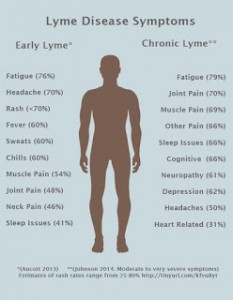 9 Steps to Prevent Tick Bites
9 Steps to Prevent Tick Bites
Summer is here, and people are beginning to spend more time outdoors, enjoying the warmth and sunshine. However, Lyme disease has been consistently on the rise for several years. According to the US Centers for Disease Control and Prevention, Lyme disease to be affecting up to 300,000 people each year with the majority of the cases occurring in the Northeast. In fact, about 50,000 of these cases come from the state of Massachusetts alone. These worrying statistics make Lyme prevention and precautions necessary for everyone to know and utilize.
Lyme disease is contracted through the bite of a deer tick, transferring the bacteria called Borrelia burgdorferi. Typically, after the initial bite, a bull’s-eye shaped rash appears on the skin where the bite occurred. However, the bulls-eye rash does not always appear. Soon physical and neurological symptoms may begin, which can affect the nervous system, heart, and joints.
Ensure the safety of your family this summer by carefully reviewing this list of ways to prevent infection.
- Take Care of Front and Back Yard - Ticks live in heavily wooded or grassy areas, so be sure the back and front yard of your house has been cleared of any brush to reduce the risk for coming into contact with a tick.
- Discourage Deer – Ticks live and feed off of deer, so discouraging them from entering your yard can help prevent tick bites. There are many natural ways to repel deer, as deer often follow what they smell. Along with many anti-deer sprays, such as Plantskydd, purchasing the urine of deer predators (such as the coyote and fox) and spreading it around the yard will keep the deer away. Other smells that repel deer include garlic, hot sauce, and dish soap. If you have a garden, be sure that there is some kind of a fence or netting to protect plants from the deer and dissuade them from approaching.
- Where Long Pants and Long Sleeves – Avoid contact with a tick by reducing the amount of open skin on your body when you know you will be walking or hiking through heavily wooded areas.
- Walk in the Center of Trails – When walking on trails, stay toward the middle where the brush has been cleared to avoid contact with a tick.
- Use Tick Repellants – Repellants can protect a person for many hours. Repellants containing 20% or more DEET can be used directly on the skin while products containing permethrin can be used on clothing and outdoor equipment. Always remember to follow product instructions on safety and avoid contact with eyes, hands, and mouth.
- Keep Pets Away From Problem Areas – Make sure your pets are not able to run into an area with high grass or heavy brush to prevent contact with ticks. Pets can also potentially bring a tick into the home after coming into contact, so limiting their access to such places will help deter this from happening.
- Use Tick Collars or Other Treatments for Pets – Veterinarians can prescribe tick collars and other spot treatments to protect your pets from potential tick bites.
- Use Damminix Tick Tubes®- These tubes are biodegradable and filled with cotton that has been treated with permethrin, the same treatment used to repel ticks on clothing and outdoor gear. After being placed in strategic areas, mice take the cotton from the tube to build their nests, and when the deer ticks feed off of the mice, they are exposed and killed. No other animals are troubled or hurt in the process.
- Do Tick Checks – Before entering your home after being outside, check all clothing and pets for ticks. If you find any ticks on your clothing or you have fear that there are unseen ticks, remove your clothing immediately with care and place the clothes in the dryer at high heat. This will successfully kill any ticks.
If you are concerned that you may have been infected with Lyme disease, free tests are available here!
Lyme has the ability to cause a large number of neurobehavioral and neurocognitive problems, including:
- Forgetfulness
- Memory loss
- Problems with information storage
- Information retrieval
- Word retrieval
- Understanding numbers
- Forgetting how to perform a task
- Dyslexia-like reversals
- Leaving out letters and or words
- Difficulty with writing
- Trouble organizing speech and/or writing
- Slowed, slurred or stammering speech
- Difficulty with concentration
- Difficulty reading or spelling
- Confusion
- Difficulty thinking
- Brain fog
- Attention deficit problems
- Distractibility
- Poor school or work performance
- Changes in vision, difficulty focusing, eye tracking and other visual functions
Emotionally, Lyme can cause:
- Mood swings
- Irritability
- Extreme agitation
- Anxiety
- Depression
- Malaise
- Loss of motivation
- Problems initiating activities and/or assignments or projects
- Sleep disturbance
- Difficulty falling asleep
- Difficulty staying asleep
- Obsessive compulsive disorders
- Aggressive behavior
- Impulsive behavior
- Violence
- Low tolerance for frustration p
- Panic attacks
- Suicidal thoughts
- Seizures
Neurofeedback can improve these symptoms effectively, making day to day life manageable for those suffering from Lyme disease. However, since our philosophy of treatment is “corrective care”, and since Lyme can be a progressive disorder, it is best to obtain definitive treatment from a good Lyme literate physician first.
Image from: http://www.lymedisease.org/lyme-basics/lyme-disease/symptoms/








